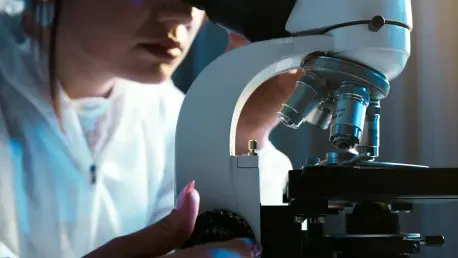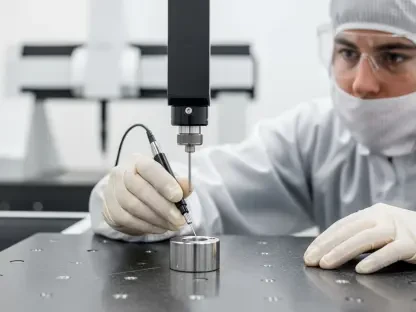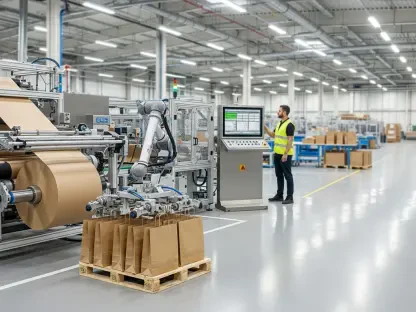In an era where the pharmaceutical industry faces mounting pressure to reduce environmental impact while maintaining high safety standards, a groundbreaking approach is emerging from a leading player in China. Hengdian Group’s pharmaceutical subsidiary, based in Hengdian, has taken significant strides toward revolutionizing drug production by embracing an innovative technology that promises to transform how medicines are made. This method not only addresses critical challenges like waste reduction and energy efficiency but also enhances the safety of handling hazardous materials. As global demand for sustainable practices intensifies, this company’s efforts stand out as a beacon of progress, offering a glimpse into the future of greener and safer manufacturing processes within the sector.
Innovations in Pharmaceutical Manufacturing
Transforming Production with Continuous Flow Technology
The adoption of flow chemistry represents a paradigm shift from traditional batch processing, where reactions occur in discrete, separate stages. Unlike the conventional approach, flow chemistry facilitates chemical reactions in a continuous stream, utilizing compact tubular reactors that allow precise control over critical parameters such as temperature, pressure, and reaction time. This results in numerous benefits, including minimized waste and significantly reduced energy consumption. Additionally, the technology achieves higher yields with a lower Process Mass Intensity footprint, aligning operational efficiency with environmental responsibility. By integrating this method, the company demonstrates a commitment to sustainable practices that could set a new standard for the industry, particularly in managing resources more effectively during drug production.
Enhancing Efficiency Across Development Stages
Beyond environmental advantages, flow chemistry supports the entire lifecycle of drug development, from early-stage research to large-scale commercial manufacturing. With facilities strategically located in key global hubs like Boston, Shanghai, and Hengdian, the company ensures comprehensive expertise across all phases of production. A dedicated team of over 50 scientists and engineers manages a wide array of reaction types, showcasing the depth of technical capability. This approach allows for seamless scaling of processes while maintaining high standards of quality and efficiency. The ability to handle complex chemistries in-house, rather than outsourcing risky procedures, further underscores the transformative impact of this technology on streamlining pharmaceutical manufacturing and ensuring consistency throughout the development pipeline.
Safety and Sustainability as Core Priorities
Managing Hazardous Reactions with Precision
One of the standout features of flow chemistry lies in its capacity to safely handle hazardous materials and high-risk reactions that many in the industry often avoid. Techniques such as azide and hydrogenation reactions are conducted with remarkable cycle times, drastically reduced from hours to mere minutes compared to traditional methods. Similarly, nitration processes achieve substantially higher yields in a fraction of the time, while dangerous intermediates are produced in-situ to eliminate isolation risks. Other complex reactions, including ozonation, are managed at room temperature rather than extreme cold, slashing energy use and mitigating explosion hazards. This precision not only enhances safety for workers and facilities but also positions the company as a leader in tackling challenges that competitors may sidestep.
Driving Environmental Responsibility in Drug Production
Sustainability remains a cornerstone of this innovative approach, with flow chemistry delivering energy savings of over 60% in certain processes while reducing waste output. Reactions like fluorination and organometallic chemistry showcase capacities and yields that surpass industry benchmarks, reflecting a dual focus on efficiency and ecological impact. The broader market for this technology is on a robust growth trajectory, projected to reach $2.9 billion by 2028 with a compound annual growth rate of 10%, fueled by regulatory support and advancements in automation. Aligning with these trends, the company’s long-term investment of over $20 million in developing this platform highlights a forward-thinking strategy. This dedication to greener practices addresses pressing global demands for environmentally conscious manufacturing, reinforcing the importance of balancing innovation with responsibility in the pharmaceutical sector.
Reflecting on a Legacy of Progress
Setting Benchmarks for Future Innovation
Looking back, the journey of integrating flow chemistry into pharmaceutical manufacturing marked a pivotal moment for the industry. The strategic focus on embedding this technology as a core operational component yielded tangible improvements in efficiency, safety, and environmental stewardship. By managing complex and hazardous reactions in-house with unprecedented precision, significant milestones were achieved that reshaped industry expectations. This legacy of innovation not only highlighted the potential for safer drug production but also demonstrated how sustainability could be seamlessly woven into the fabric of large-scale manufacturing. The impact of these efforts rippled across the sector, inspiring a reevaluation of traditional practices.
Charting the Path Forward for Greener Practices
As the pharmaceutical landscape continues to evolve, the groundwork laid through these advancements offers actionable insights for the future. Industry stakeholders can build on this foundation by investing in scalable technologies that prioritize both safety and sustainability. Exploring partnerships to share knowledge and resources could accelerate the adoption of continuous flow methods globally. Additionally, aligning with regulatory frameworks that incentivize green practices will be crucial for widespread change. The success seen in this initiative serves as a compelling case for integrating innovative solutions into everyday operations, paving the way for a more responsible and efficient future in drug manufacturing.









